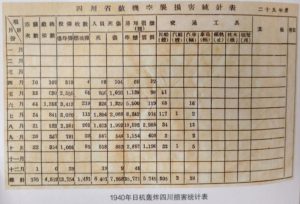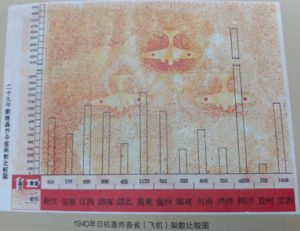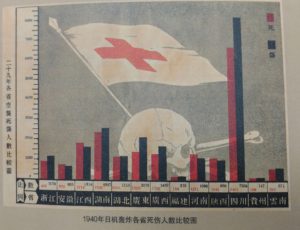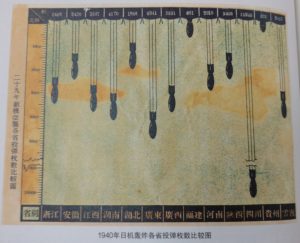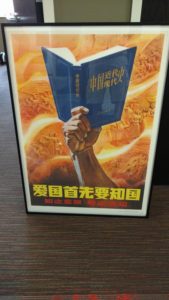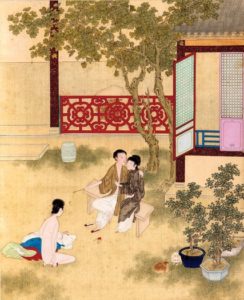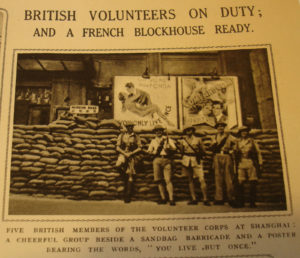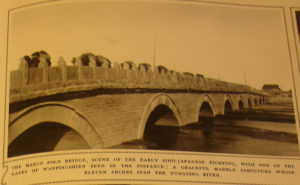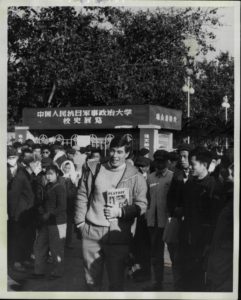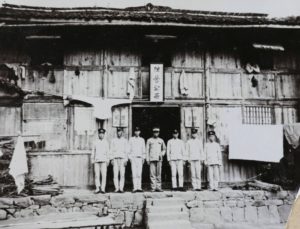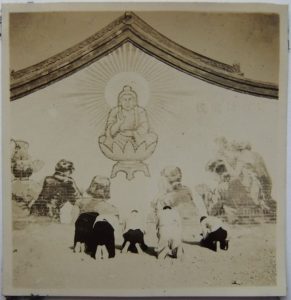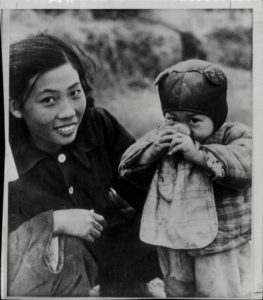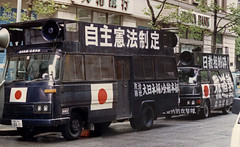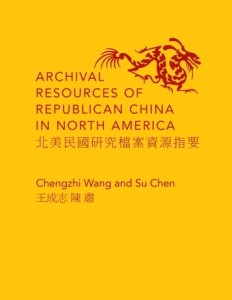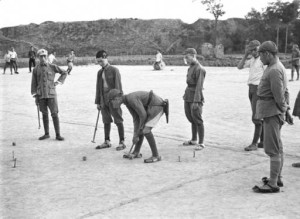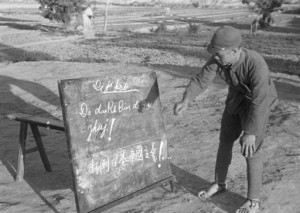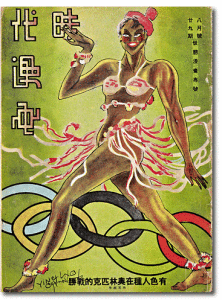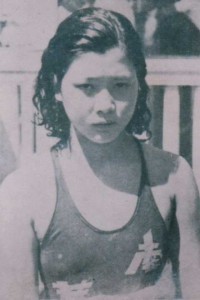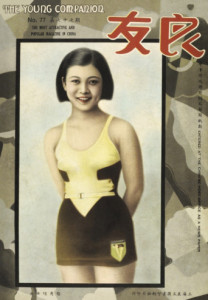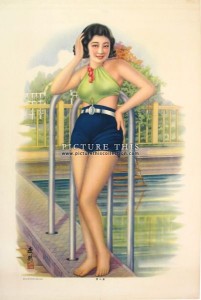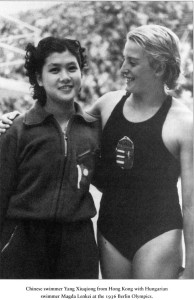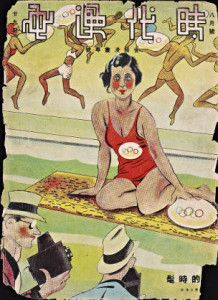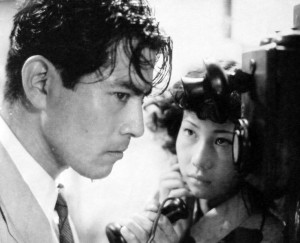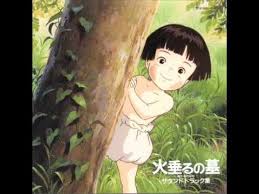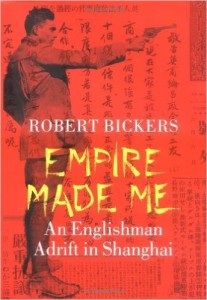I seem to have forgotten to blog about syllabus ideas for the current semester, so I am going to do something unprecedented to make up for it, which is to blog about syllabus ideas for next semester now, before I even order books for Fall. (It’s a topsy-turvy world, I tell you.)
If you are interested, all the syllabai for this semester are here.
For Fall 2016 I have pretty much the same line-up
The new class for Fall is HIST 437 History of Modern Japan (Meiji to present) This is the first time I am doing it this way. I have split Japan in half, since I was getting tired of spending the whole first part of a 1600 to present Japan class talking about social and economic history and then the whole second half putting politics in command.
For a textbook I am going to use
Goto-Jones, Christopher. Modern Japan: A Very Short Introduction. OUP, 2009.
I like these Short Introductions, and given how hard it is to get students to read a textbook, shorter is better.1
Nagatsuka, Takashi, and Ann Waswo. The Soil: A Portrait of Rural Life in Meiji Japan. Berkeley: Univ. of California Press, 1989.
Need a primary source for an upper-level class, and this one works well for rural life, family, etc.
Silverberg, Miriam. Erotic Grotesque Nonsense: The Mass Culture of Japanese Modern Times.. University of California Press, 2009.
Given that a lot of the class will be about films and modern culture this seems like a good monograph to use, and of course you need one of those.
Then I was thinking of using a few films, possibly Eijanaika, 1981; Stray Dog, 1949; and Akira, 1988
What else could I put in here? Anything you would substitute for one of these?
HIST 198 The Rise of Modern Asia (India to Japan, 1850 to present) will remain pretty much the same, and the books will still be
Amitav Ghosh The Glass Palace: A Novel.
I could see replacing this with something else, if I could think of anything else that covers as much time and space in a well-written historical fiction novel as this.
Guha, Ramachandra. ed. Makers of Modern Asia.
I think this is working o.k., for the kids who read it. I really like the idea of focusing on biography as a way to bring all the stuff that was happening into focus, although of course that leads to and emphasis on political leaders. Honestly I can’t think of anything else as a substitute.
Asia 200 Introduction to Asian Studies
This is the one where I try to come up with a set of books and movies that cover most of Asia and various disciplinary traditions. So this semester I used
Shadid, Anthony. Night Draws Near: Iraq’s People in the Shadow of America’s War. Picador, 2006.
Worked o.k. I always start with a journalist/travel book to make things easy
-Errington, Frederick, Deborah Gewertz, and Tatsuro Fujikura. The Noodle Narratives: The Global Rise of an Industrial Food into the Twenty-First Century. Berkeley: University of California Press, 2013.
Not a huge hit, although I am not sure why.
-Chan, Koonchung. The Fat Years. Translated by Michael S. Duke. New York: Anchor, 2013.
Worked o.k. Plus it breaks India’s long stranglehold on the novel/literature category.
-Jerryson, Michael K. Buddhist Fury: Religion and Violence in Southern Thailand. Oxford: Oxford University Press, 2011.
Just starting this now
-Amrith, Sunil S. Crossing the Bay of Bengal: The Furies of Nature and the Fortunes of Migrants. Cambridge: Harvard University Press, 2015.
Have not gotten to this yet.
For movies I used Tampopo (1985), although they did not care for it, as it was too weird, and Paradise Now (2005) which they liked a lot.
This class is getting to be more and more difficult to figure out. I could of course repeat a book……I don’t normally do that, but I could. I am sort of stuck in a rut of doing Journalist books on the Middle East (have to have Middle East/Islam somewhere) because there are so many of them and, frankly, it is the easiest thing for me to teach in that region. I was thinking of pairing up
Suleri, Sara. Meatless Days. Chicago: University of Chicago Press, 1991. The autobiography of a Pakistani woman, so Islam and Literature. I did this before. Students hated with the passion of 10,000 burning suns, until some of them started to like it.
with
Hoesterey, James. Rebranding Islam: Piety, Prosperity, and a Self-Help Guru. Stanford: Stanford University Press, 2015. Anthropology and Southeast Asia
Maybe Meyer, Michael. The Last Days of Old Beijing: Life in the Vanishing Backstreets of a City Transformed. Reprint edition. Walker Books, 2009. for Journalism/travel writing, and a good Pan-Asian topic of rapid urbanization
Then maybe do something weird, like
Slingerland, Edward. Trying Not to Try: Ancient China, Modern Science, and the Power of Spontaneity. New York: Broadway Books, 2015.
Yes, it’s a self-help book, and it’s based on Zhuangzi, who my students generally dislike, but it’s EDWARD SLINGERLAND. Plus, for the first time I will be able to include “Philosophy” as one of my disciplinary traditions. Alas, this is two China books.
A few of other possibilities are
Truitt, Allison J. Dreaming of Money in Ho Chi Minh City. Seattle: University of Washington Press, 2013.
White, Merry. Perfectly Japanese: Making Families in an Era of Upheaval. Berkeley: University of California Press, 2002.
The problem with these is that while I could cheat and call Truitt Economics and White History they are both really anthropologists. I have no problem thinking of history books, and literature is easy, as is Journalism/travel. Lots of other disciplines (Sociology., Political Science, Economics) have pretty much abandoned the Area Studies approach, and so while I would like to fit them in, I usually can’t.
So what is your advice? What cool Asia books would you love to teach?
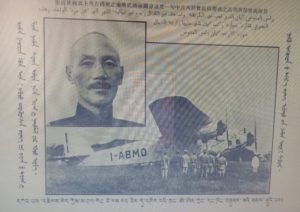 Here is a nice picture of Chiang Kai-shek and his government’s outreach to minority nationalities. It comes from 蒙藏月報1935,3(6) (Mongolia and Tibet Monthly). Here we have Chiang being congratulated for his hard work of travelling all over the country. Or at least that’s what it says in Chinese. I assume that is also what it says in Manchu, Mongolian, Tibetan and Arabic, although I don’t know that. There was a quite a bit of outreach to these borderland nationalities later, although 1935 seems a bit early for this to me, although I have not really done work on this.
Here is a nice picture of Chiang Kai-shek and his government’s outreach to minority nationalities. It comes from 蒙藏月報1935,3(6) (Mongolia and Tibet Monthly). Here we have Chiang being congratulated for his hard work of travelling all over the country. Or at least that’s what it says in Chinese. I assume that is also what it says in Manchu, Mongolian, Tibetan and Arabic, although I don’t know that. There was a quite a bit of outreach to these borderland nationalities later, although 1935 seems a bit early for this to me, although I have not really done work on this.
